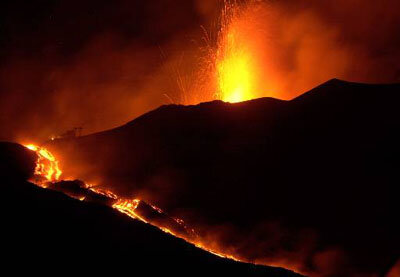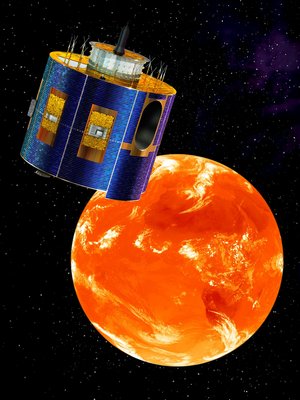MSG: In the eye of the volcano
It began with a soft rumble. Dogs began to bark at the distant sound coming from Nyarigongo, an active volcano some 17 kilometres away from the city of Goma in the Democratic Republic of Congo. Within hours hot, fast flowing lava had reached the city. The local population, who were unprepared for the eruption began to panic. Soon 300,000 people were clogging the roads out of town. Gasoline stations exploded in the path of the searing lava - homes and hospitals were buried and burnt. In all some 70 percent of the town was destroyed, but mercifully only 50 people were killed.
Few scientists in the region had predicted this eruption in January this year. Despite the efforts of vulcanologists on the ground, there was no satellite data available to show the build up of lava, information that might have convinced authorities to evacuate the city and helped international aid agencies to mobilise in advance. For volcanoes in Africa and many parts of Europe simply can't be seen in the detail and the regularity needed to monitor their condition and predict their behaviour.
But this crucial "blind spot" will soon be overcome. The Meteosat Second Generation will not only bring better and more accurate weather forecasts, but it will also allow Vulcanologists a clearer and more regular view of volcanoes in Africa and Europe, as it looks down from its geo-stationary orbit.
Dr. David Rothery is from the Open University in Great Britain. He's an expert on the dynamics of volcano systems He says that because the instrumentation on MSG is more advanced, scientists can sample the mid infrared range of the spectrum and that this is very good for monitoring heat, especially hot spots like volcanoes or fires.
"The 3.9 micron channel will be a useful thermal channel for us" says Rothery "but the key thing will be the frequency of the images. When a volcano erupts, you're never quite sure which way the lava is flowing, it's often not noticed for several hours. But with MSG we will get an image every 15 minutes. This will be a real help. With this capability on MSG we can potentially spot things happening early over Africa and Europe. So when something like the big lava flow that happened in Goma, provided there isn't any cloud in the way, we'd see the flow within 15 minutes". "I wouldn't want to claim that MSG is a magic wand that gives you wonderful warnings that everyone will believe, but the more data you get the more of a difference you can make". And Rothery says that the type of information the MSG can provide could be even more valuable in remote parts of Africa. "With Nyarigongo they should have had tilt meters, They should have been able to tell it was splitting apart, but they didn't - Data from MSG would help to make up for these sort of deficiencies in ground based monitoring".

And MSG will also make a difference in Europe. In 2001 Mount Etna reminded everyone that it wasn't extinct. Although the damage done was minor compared to Goma, it is estimated that the eruption cost the region about 3.5 million Euro in lost revenues from tourism and agriculture.
Vulcanologists watch Etna very closely. There are cameras and sensors looking at it all the time, but David Rothery says MSG will still make a difference. "Etna is quite well monitored but access in the winter because of snow is often difficult - With MSG we can see the timing of all the events on Etna. There are video cameras and there are scientists looking at Etna all the time but MSG would be another string to our bow. If you can't get there on the ground because the snows are too deep the satellite can look down pretty much into the crater for you - Yes, it's a different perspective, but it's frequent and the data are of the same quality".
Dr. Rothery says MSG is not a panacea for the world's volcanoes, but for Africa and Europe it could prove a really useful tool.







